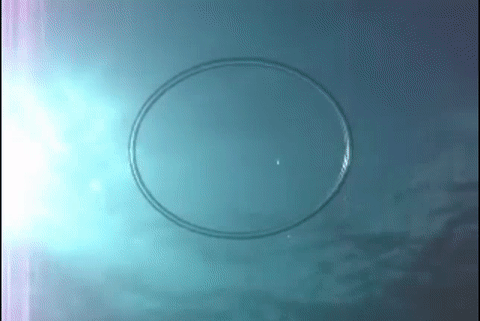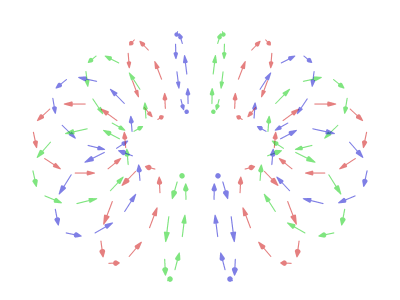Physics at the Pool: Bubble Rings
Summer is starting to wind down, but pools are still open—which means there's still time to explore the interaction of fluid dynamics and buoyancy with this fun underwater activity!
What you'll need:
- A swimming pool—the deeper the better
- Goggles or a snorkel mask for you and anyone watching
Plastic wrap (optional) - Adult supervision
What to Do
First, make sure someone with you is watching, in case you need help—and so you have an observer for your experiments. Strap on your goggles, take a deep breath, and swim to the bottom of the pool. This part will take some effort, since your body is naturally buoyant and the air in your lungs adds to that. If you have a hard time staying on the bottom of the pool, it might help to bring a heavy object that you can hold, to help you sink, or to let out some of the air in your lungs.
Once you're at the bottom of the pool, turn to face the surface—you might need to plug your nose at this point, if your mask doesn't cover it and you can't deal with the feeling of water in your sinuses. Purse your lips and fill your mouth with air from your lungs, then—once the water's calm—let out all the air in your mouth, in a big burst. If it's done right, you should see the bubble turn into a ring shape on its way to the surface.

This part takes practice, so don't be discouraged if you can't get it on the first try! There are plenty of videos online that offer tips and tricks on how to get it right.
Try letting out a similar amount of air from your nose, and notice how long it takes to reach the surface. Most of the time, you'll find that ordinary air bubbles travel upwards much faster than the bubble rings.
What's Going On?
Bubble rings are a kind of vortex, a mass of spinning fluid that occurs when a current catches its tail and ends up flowing around in a circle. This kind of vortex in particular is driven by pressure. When you dive deep in the pool, you can often feel pressure with your ears—that's the water above weighing down on you. When you release a big bubble of air, the water below that bubble pushes it upward, especially at the center; if the bubble is big enough, the pressure difference between the bottom and the top of the bubble is so great that the bottom surface rises faster than the top, and the two connect at a point in the center to create a sort of donut shape. The hole in the middle of the bubble lets water through, which begins to circulate around, turning your bubble into a full-fledged vortex ring!
The reason these rings rise more slowly than regular bubbles has to do with their rotation. In the image below, you can see a vortex ring broken down into a number of rotating circles; if you imagine these rolling along a solid object at the center of the ring, you can see that it produces a downward force that helps to balance the bubble's buoyancy.

Apply It!
How big does a bubble have to be to form a vortex ring? How deep does it have to start out?
Catch a bubble of air under some plastic wrap and drag it to the bottom of the pool, so you can experiment more precisely with bubble sizes!
-Stephen Skolnick














